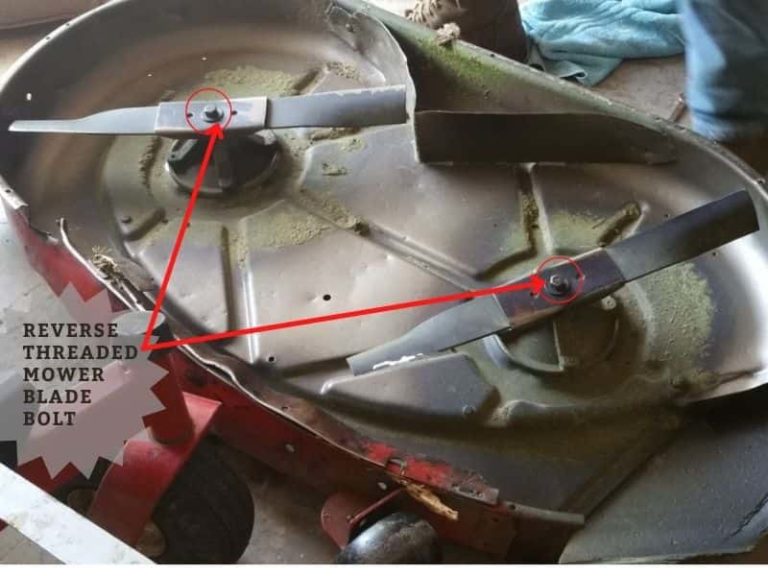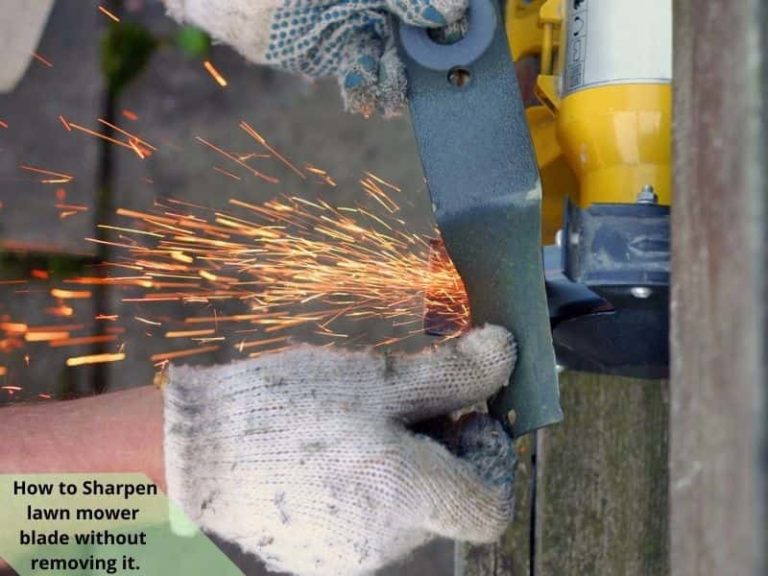How to Clean a Lawn Mower Carburetor?
The carburetor is the part of the engine where air and fuel mix to facilitate combustion. A clogged or dirty carburetor reduces engine performance. You might notice choking black smoke, engine stalls in the middle of mowing, and rising gas expenditure. To regain optimal lawn mower engine performance, you need to clean the carburetor for easier mowing.
The quickest way to clean a lawnmower carburetor is using a commercial carburetor cleaner. The spray can product cleans the carburetor without disassembling the lawnmower. Spraying the cleaner removes dirt and carbon deposits and dissolves gunk and lead. The best cleaners don’t leave any oily residue.
Signs of a dirty carburetor?
You can tell that your carburetor is clogged or has excessive sludge deposits if:
- Your engine turns over but doesn’t start.
- The engine starts and then stalls.
- Black smoke is coming out of the mower’s muffler.
- The engine is flooding.
Engine Hard Start
If your mower’s engine has trouble starting, your carburetor bowl may be clogged. The clogs hinder the proper intake of air and fuel into the carburetor. The engine cranks but won’t start due to an imbalance in the air-fuel mixture inside the carburetor.
Mower Stalling
Stalling after starting is one of the most common indicators of a gummed-up carburetor in a mower. Old fuel can gum up the fuel cap vent, causing insufficient fuel flow into the carburetor. As a result, your engine might start and run for a few seconds before stalling.
Black Smoke
Your carburetor is likely dirty if black smoke comes out of your exhaust. This happens when the engine is running rich due to excess fuel being pumped into the carburetor, and not enough air is getting drawn in. Engine flooding caused by a clogged needle valve causes the engine to run rich.
The carbon buildup could damage the lawnmower engine.
Clogged Needle Valve
Fuel floods into the carburetor bowl when the needle valve inside the carburetor is clogged. This condition is known as engine flooding. Engine flooding throws the air-fuel ratio off-balance, resulting in combustion issues.
Can you clean the carburetor without removing it?
It’s possible to clean your lawn mower carburetor without removing it. If you’re not savvy with the mechanical aspects of small engines, avoid disassembling your carburetor. To clean the carburetor without removing it from the engine, you need to spray it with a carburetor cleaner.
If you don’t have carb cleaner spray, you can use brake cleaner instead. Both of these products are formulated to break down grease and grime deposits. Thus, brake cleaner is an effective carb cleaner and won’t damage your carburetor.
How to clean a lawnmower carburetor?
Cleaning the lawn mower’s carburetor is essential for optimal engine combustion and improved mower performance. To clean your lawn mower carburetor without taking it out of the engine, you need to remove the outer components and spray the exposed carburetor before reassembling the parts.
1. Take Safety Precautions
Old fuel is a common cause of carburetors clogging up. Stale fuel is harmful. Long-term exposure to toxic fuel fumes could cause respiratory problems. Protect yourself by wearing a surgical mask or ensuring your working area is well-ventilated.
2. Remove the Outer Components
You don’t need to remove the carburetor to clean it. However, you must remove the outer parts, such as the air filter and fuel lines, to access the carburetor.
You’ll find the air filter next to the fuel tank. To remove it, unfasten the screws securing it in place. With the air filter out, you can see the exposed carburetor. Disconnect the fuel lines from the carburetor using nose pliers.
While at it, drain all the oil from the fuel lines since stale oil is one of the reasons carburetors clog. Also, wash the air filter with soapy water. A dirty air filter causes dirt and debris to enter the carburetor.
Note: Have an old rag on standby when detaching the fuel lines. Fuel will be spitting out of the carburetor and the fuel lines at this point.
Remove the carburetor jets by unfastening the bolt beneath the carburetor bowl using a wrench tool. Remove the bowl and gaskets as well. Remember to clean the jets by spraying them with aerosol carb cleaner to remove built-up debris.
Note: You can also remove caked-up grime from carburetor jets by inserting a thin metal wire through the passages.
With the bowl out the way, you’ll see the carburetor float with a pin that has a needle. If this needle is clogged, replace it with a new one. Replace the gasket where the needle sits, too.
3. Spray the Carburetor
With the outer components out of the way, you can now clean the carburetor’s interior.
Start the mower’s engine before pouring or spraying liquid carb cleaner on the carburetor. The running engine ensures the cleaner is spread out all over the jets to eliminate all clogs.
When spraying the carburetor, the tip of the aerosol cleaner should be facing the center of the carburetor. This ensures that the cleaner seeps into the carburetor’s throat to wash out all the gunk within the bottom throttle plate.
Note: As a safety measure, avoid touching the carburetor while the engine is running.
You also need to clear the holes inside the carburetor of sludge deposits. You can do this using a straightened paper clip or a thin wire.
4. Reassemble the Outer Components
With the carburetor now clean and unclogged, reassemble the outer parts you’d taken out earlier to access the carburetor. First, secure the jets before screwing the carburetor bowl back on. Next, reconnect the fuel lines leading to the carburetor and ensure their claps are firmly secured.
Finally, place the air filter back into its original position and secure it using the screws you’d taken out earlier when removing it. You can then pour fresh fuel into the fuel tank and start your lawnmower to check if the engine is running better.
How often do carburetors need to be cleaned?
While there are no exact timelines on how often one should clean the carburetor, many small engine technicians agree that you should clean it at least twice per year. With time, grass, dirt, and other lawn debris find their way into the carburetor, blocking the fuel passages and reducing engine performance.
Note: You should also clean your carburetor if the fuel tank has old fuel. Old fuel clogs up the carburetor passageways. Drain it before cleaning the carburetor and pouring fresh fuel into the gas tank.
How do you know if your carburetor needs cleaning?
- If the engine turns over but doesn’t start.
- When there’s black smoke coming out of the muffler.
- If the engine starts then stalls.
- If the engine runs lean.
- When you’re using more gas than usual while mowing.
References
- U.S. Department of Energy, Office of Scientific and Technical Information: Carburetor idle system air/fuel ratio control.
- Terry L. Hendricks, University of Wisconsin- Madison: Numerical and Experimental Fuel Flow Analysis of Small Engine Carburetor Idle Circuits




